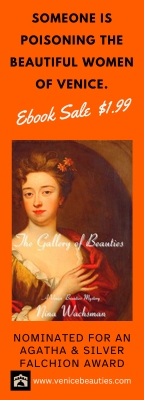by Diana Bulls
“Summer’s here and the livin’ is easy. Fish are jumpin’ and the cotton is high.” Well, actually it’s not cotton, but fruits and vegetables. That’s right, summer’s bounty can be found at our local farmer’s market on Wednesday night, at fruit stands and in our own backyards. The variety of fruits and vegetables we have available is one of the best things about summer in the San Joaquin Valley.
So what do you do with all that produce? Well, you serve it up fresh of course, or give your extras away to friends and neighbors, and you just might do a little freezing, canning or preserving yourself, in order to savor all that goodness in the middle of winter. And that brings me to this month’s collectible: the humble, but ever so important canning jar.
In the long history of food preservation, canning is a fairly recent entry. People have dried or salted food for eons, but it wasn’t until the late 18th century that food was preserved by heat and sealed in airtight containers. Canning works by using heat to kill the organisms that can spoil food and then sealing to keep any new ones from entering the container.
We can credit Napoleon Bonaparte with starting the canning trend around 1795. Napoleon’s army was constantly moving and he wanted a safe method for preserving food. A few Frenchmen took up the challenge and did make some headway, but it took almost a century before canning became practical.

Wax sealers; inset shows sealer channel, c. late 1800s. Jars courtesy of Georgia Linscheid.
The Mason Jar

Mason jar with the patented Nov. 30, 1958 date. This jar was machine made, c. 1915; courtesy of Georgia Linscheid.
The Lightning Jar
The Lightning jar was invented in 1882 by Henry Putnam of Bennington, Vermont. The glass jar had a glass lid and a metal clamp that held the lid in place, and was sealed with a rubber gasket. They were popular because no metal could touch the food to contaminate it. The metal clamps also made the lids easier to seal and remove, hence the name “Lightning Jar.” Similar glass lid and metal clamp jars were made into the 1960s. They can easily be found at garage sales and flea markets. These jars are still widely used in France and Italy, and although they have a 150 year plus record of canning safety, the U.S. National Center for Home Food Preservation only recommends them for dry storage.
The Atlas Jar

Two Atlas jars: an Atlas E-Z Seal lightning style, with its original E-Z seal lid, and a strong shoulder jar, both c. 1910.
The Ball Jar

A selection of Ball jars; note different shapes, sizes and logos, c. 1910.
The Kerr Jar
Alexander Kerr founded the Hermetic Fruit Jar Company in 1903, and the Economy and Self Sealing jars were some of the first jars produced. These were the very first wide-mouth jars (something that Ball was quick to duplicate). In 1915, Kerr developed the metal lid with a permanent rubber gasket. The lids were easy to use and didn’t cost much and they could also be used on other brands of canning jars! This was the birth of the canning jar we know today. This two-part lid system transformed home canning and is still in use.

A box of new Ball zinc lids--made to fit all brands of canning jars (c. 1930s); a Drey Square Mason and a Bamberger's Mason; c. 1920.
Collecting Canning Jars
Collectors love antique canning jars and the value of the jar is in its color, shape, mold and production marks. Colored jars were considered to be better for canning use because the color prevented light from reaching the food, helping it to retain flavor and nutritional value longer. Most jars found today are either clear or in a shade of blue known as “Ball blue” (named for that company). On rare occasions jars can be amber, dark green, cobalt blue, black or milk glass. The value of antique Ball, Mason and Kerr canning jars varies greatly. Typical prices range from $8 to $25 a jar. A note of caution on Mason jars, just because the jar says “Patented Nov.30 1858” doesn’t mean it is that old!
Canning jars can be used for all kinds of things besides just sitting around on a shelf. Store colored buttons, various colors of dry beans, of spices. Use them for table centerpieces, filled with flowers from the garden. The ideas are endless, and they still look good sitting on a shelf in your kitchen.
Things to look for in old canning jars:
• Age-Generally the older the jar is, the greater is value. Look for signs of older age, such as pontil marks (a lump of glass where the glass blower attached to the molten glass) and indented rings found in the bottom of the jar. These are usually to be found on jars made before 1858. Seams along the entire side , from bottom to top, mean the jar was made by a machine, probably after 1915.
• Condition-Chips and cracks reduce the value significantly. A jar that still has its original lid will be worth much more.
• Embossing-Many canning jars were embossed with the Mason patent date, November 30, 1858. Unusual embossing designs and misspellings add to the value.
• Closures-Rubber rings and wire clamps were once common. If the original closure is present, it will add to the value. Some other types of closures are: Putnam’s Trademark Lightening; Peerless; A. & D.H. Chambers Pittsburgh, Pa; Stark lid and jar.
• Color-Clear is most common, but other colors can include aqua, amber, dark amber, emerald, milk glass, cobalt and black.
• Size-Most jars are quart size or smaller, but larger jars can fetch higher.
• Designs /shapes-Square jars are less common.
Jar Collecting Websites
www.sha.org/bottle/food.htm#Canning/Fruit Jars
www.balljars.net
www.minnetrista.net/blog/2013/06/27/ball-family-history/how-to-date-a-ball-jar
Check out more of Diana’s home collectible articles here in KRL’s Hometown History section.















That’s very wonderful!
This is a great article about the history of formation and development of canning jars.
Reading your article I understood why it is called Mason.
Thank you for helping me expand my understanding.